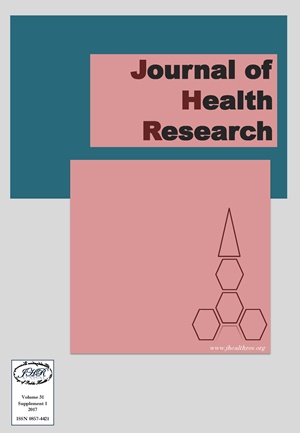Evaluation of Physical, Chemical, and Biological Parameters in Pekapuran Banjarmasin Waste Water Treatment Plant (WWTP), Indonesia
Keywords:
Waste water, Physical parameters, Chemical parameters, Biological parametersAbstract
Background: Waste water is water that contain hazardous materials that can endanger human life, other living beings, and environments. This research aims to analyze the differences before and after the treatment of waste water using physical parameters (temperature and Total Solid Suspense (TSS)), chemical parameters (pH, Biochemical Oxygen Demand (BOD), Nitrate-Nitrogen (NO3-N), Total Factor Productivity (TF-P), oil and fat), and biological parameters (E.Coli).
Methods: The research design was an observational analytic using a cross-sectional approach. A Paired t-test and Wilcoxon test were used to analyze the impact before and after the treatment of Pekapuran Banjarmasin WWTP in 2015.
Results: The results in the WWTP of Pekapuran showed the average values before and after treatment in TSS (p-value=0.009), pH (p-value=0.001), NO3-N (p-value=0.037), TF-P (p-value=0.005), oil and fat (p-value=0.028), E.Coli (p-value=0.002), temperature (p-value=0.053) and BOD (p-value=0.0162). There were significant differences (p≤0.05) in the value of TSS, pH, NO3-N, TF-P, oil and fat and E.Coli before and after the treatment in Pekapuran Banjarmasin WWTP. Although, there were no differences (p≤0.05) in BOD and temperature before and after the treatment in Pekapuran Banjarmasin WWTP.
Conclusions: Although there was a difference before and after the treatment, there was still a possibility to the other parameters that excess of the standard. So, it was not guarantee an improvement of the quality of the waste water. Pekapuran Banjarmasin WWTP maintenance and repair the WWTP system and monitor and evaluate the facilities and procedure of WWTP routinely.







